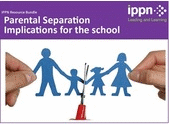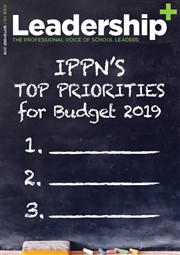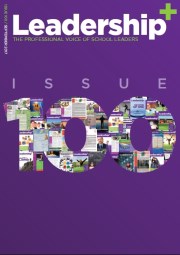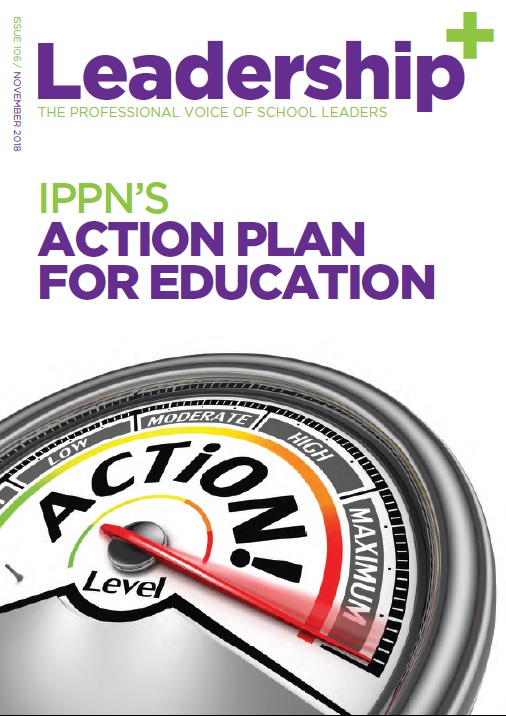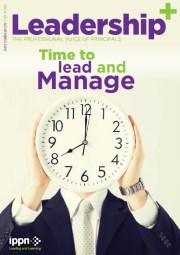E-Scéal 123: Filling a Teaching Vacancy (Permanent & Part-time)
- Published: 02 August 2007
It is evident from calls to the IPPN Support Office that many Principals and Boards of Management are now in the process of making permanent and temporary appointments.
The procedures governing all teaching appointments in a primary school can be found in Appendix D, Pages 45 to 49 of the Board of Management Members' Handbook 2004.
All appointments of teachers in the school shall be made by the Board of Management in accordance with the Rules for National Schools and subject to the prior approval of the Patron.
For your convenience you will find below a summary of the essential steps which are required to be taken in appointing a teacher. It is essential that all procedures are followed with great care.
Le meas,
Virginia O'Mahony
Assistant Director
STEPS FOR FILLING A TEACHING VACANCY
Note: These steps apply to both permanent and temporary vacancies
1.Notify the Board of Management of the vacancy and the reason for it.
2.Check the following:
- That the Diocesan Redeployment Panel is clear
- With the Department if your enrolment is falling
- If vacancy occurs after 1st June, vacancy is filled on a temporary basis until September 1st.
4.Notify the other members of staff if vacancy is for the Principalship by placing the advertisement on the Staffroom notice board. A vacancy for Principalship cannot normally be advertised in the months of July or August except in special circumstances and with prior approval of the Patron.
5.Teachers on approved leave should be notified by post.
6.Request the Patron to appoint a Selection Board.
7.Record full list of applicants.
8.If the vacancy is for a Principalship, ensure that applicants fulfil criteria set down by the Department of Education and Science for appointment. (See Circular 02/02 - also on DES website).
9.Submit list to the Selection Board.
10.Shortlist for interview according to criteria established by the Selection Board. (See www.ippn.ie Resources/ Management Resources for Sample Criteria and Marking Scheme which can be adapted).
11.Notify the candidates of date and time of their interview, giving at least one clear week's notice. Ask for confirmation of attendance.
12.Assemble documentation - CV, References, etc.
13.With the Chairperson, arrange a suitable comfortable venue, with an appropriate person to act as receptionist for the interviews.
14.After the interview the chairperson retains:
- Record the Applicants
- Record of Interview Criteria
- Record of Selection board's recommendation including marking scheme and marks allocated to each candidate.
16.Submit the Board of Management's decision in writing to the Patron for sanction.
17.Notify the successful candidate and confirm acceptance in writing. Chairperson and teacher fill relevant DES Appointment Form (available from www.education.ie for either permanent or temporary appointments).
18.Notify all unsuccessful applicants in writing and return documentation.
19.File and secure all relevant documents securely.
20.Send completed Appointment Form to DES [Primary Payments], Athlone. Contract forms will be sent out, with a letter of appointment, by the DES.
21.Sign Contracts with Chairperson and Newly Appointed Teacher as soon as possible, and retain copies of all contracts.
Appointments Procedures
For your convenience you will find below a number of resources useful in filling of a vacancy in your school and the related documents - Contracts, marking matrix, interview strategies etc.
Professional Guidance E-scéal 2007 - Appointments Procedures
CPSMA Board of Management Handbook 2004
Circular 02/02
Sample ads for teaching vacancies
Interview Strategies
Sample Criteria and Marking Scheme
E-Scéal 122: Buíochas ag Deireadh na Scoil Bhliana
- Published: 29 June 2007
Newly Appointed Principals
Congratulations to all those who have been appointed Principal for September 2007. If you have been appointed Principal recently or if your school is about to make an appointment, please contact the IPPN Support Office with the new Principal's contact details. This will help us offer three key supports and services before the beginning of the new school year.
- Sound Advice & Borrowed Wisdom - a resource pack for Newly Appointed Principals
- Mentoring - confidential support and advice from an experienced Principal
Retiring Principals
We wish all those Principals embarking on this new stage in their lives a happy and fruitful retirement from the 'front line'. We are aware that some retired Principals like to remain in contact (from a safe distance) and within 'the loop'. If you wish to continue to receive IPPN's Newsletter 'Leadership+' and other publications, please contact the Support Office by phone or e-mail with your school roll number, home address, mobile phone number & e-mail address.
Membership Renewal
Membership renewal forms will be sent to your school at the beginning of the new school year.
Summer Holidays
The IPPN Support Office will be closed from July 13th until August 17th. However, if you are in need of urgent advice ie something that cannot wait until the end of August, please send it by email to support@ippn.ie. Members of the IPPN Executive have kindly volunteered to respond to urgent enquiries during the holiday period.
This is the last E-scéal you will receive before schools reopen. We have asked the DES again not issue circulars during the official summer holidays in recognition of a Principal's entitlement to official leave.
Buíochas
Finally, it must be said that the year gone by has been extremely challenging for school leaders as the demands based on your time and energy continues to grow. We would like to thank all those of you who have given so much time and expertise for the benefit of fellow school leaders through service on the National and Executive Committees. Our deepest appreciation also goes to the tremendously dedicated staff who work at the IPPN Support Office who continuously serve above and beyond the call of duty. Lastly, we wish to thank you as a member of IPPN for your support and belief in the vision and mission of IPPN.
We trust that you will take a well deserved break during the summer holidays to fully relax, renew and rejuvenate.
Is sinne le buíochas,
Tomás Ó Slatara & Seán CottrellE-Scéal 121: Order your Free Desk Diary & Special IPPN Offers
- Published: 28 June 2007
Principals' Desk Diary
Based on your feedback, IPPN has refined the Principals' Information Management System (PIMS). The 2007/2008 version contains a new calendar, diary pages, templates for planning &administrative tasks and key contact details. If you want to receive your free PIMS desk diary, you must order it by the end of June by:
- returning the postcard issued with Issue 39 of Leadership+
- replying to this email - state your name and school role number
- telephoning the Support Office on 1890 21 22 23.
Scoiltel
This alternative telephone landline service is a genuine opportunity to save your school significant costs - 23% on average. This offer has been negotiated by IPPN on your behalf. Call 1800 905 032 for further information.
Mobile+
Would you like to halve the cost of your mobile phone bill each month? Mobile+ is an exclusive offer for Principals negotiated on your behalf by IPPN. Enquire about switching to Mobile+ by calling 086 1212422 or call into any 3G Store nationwide.
Promethean interactive whiteboards
If you are planning to invest in ICT for your school, consider the option of interactive whiteboards as demonstrated at IPPN's Conference in Killarney. ACTIVboard+2 is the number one integrated interactive whiteboard solution for Irish primary schools supplied by Prim-Ed. Please contact 051 440087 or e-mail info@prometheanireland.ie.
Azzurri
Are you thinking of including a weatherproof jacket as part of the school uniform? IPPN has worked with Azzurri to research and design a high quality, waterproof and affordable all-purpose Jacket with subtle safety features. Known as the Zuri, it is available in a range of colours with school crests added free of charge. Enquiries to 1800 380 980.
Pupil Personal Accident Insurance
The most effective strategy you can take to reduce / eliminate litigation against your school is to implement the Pupil Personal Accident Insurance scheme. Options include school-time and 24-hour cover. In the event of an accident, parents no longer need to sue the school for negligence as they can claim directly from this scheme. IPPN has negotiated a 20% discount with Allianz on policies in this scheme when arranged online at www.allianz.ie/schools. Enquiries to 01 6133966.
Is mise le meas,
E-Scéal 120: Primary SMS - IPPN Response to Members' Concerns
- Published: 06 June 2007
In the last few days, the IPPN Support Office has received a number of concerned queries about a service called Primary SMS which enables schools to send text messages to parents. The service provided by Primary SMS costs 30c per message to parents to receive texts - five times more expensive than textaparent.ie - plus a 'membership fee' of €1 per month per family! There is also considerable additional administration for schools required by this company.
As you are aware, www.textaparent.ie is a service that IPPN has researched and designed for primary schools in Ireland and is currently being used by approx. 750 schools. Each text sent through textaparent.ie costs just 6c and there are no charges for parents to receive texts, nor are there any administration fees. IPPN is critically aware of the importance in providing high quality and cost-effective services to you, our members. Textaparent.ie, like textasub.ie and educationposts.ie, is technically superior and less expensive than any other SMS service available in Ireland. So much so that a growing number of state agencies, commercial companies and non-educational organisations are availing of textaparent.ie to send bulk text messages to their staff and clients.
If you are interested in sending text messages to groups of people, e.g. parents of a particular class, parents of all pupils, members of the Board of Management or indeed your staff, take a look at textaparent.ie or telephone the IPPN Support Office on 1890 21 22 23.
As with everything else IPPN does, the quality of services provided is constantly under review and we depend on your feedback and ideas to help us continuously improve. Feedback on textaparent.ie and any other IPPN services can be sent to support@ippn.ie
Is mise le meas,
Seán CottrellE-Scéal 119: IPPN Research Bursary 2007
- Published: 31 May 2007
We are delighted to announce details of the IPPN Research Bursary for 2007. This is our 4th Annual Research Bursary for school leaders and this year we are broadening the nomination process to allow peer nominations. This means that if you are not eager to put yourself forward for a Bursary, you have the opportunity to nominate another IPPN member whom you believe to be worthy of the opportunity.
Key Points to Consider
1. Can you identify some aspect of School Leadership, Management or Administration worthy of research which if developed and shared would benefit IPPN and colleagues in other schools?
2. Is there an area in which you have a special interest and have developed good practice?
3. Is there someone you know who is an exponent of good practice and whom you feel should be given the opportunity to document and share their knowledge & skills?
Would 15 days substitute cover and €5000 help? This is your chance!
Bursary Details
- There are 2 Bursaries on offer, each to the value of €5,000 and including 15 days substitute cover
- Candidates for the 2007 Bursary Competition can be nominated by a colleague or by self nomination using the attached form
- In the case of a peer nomination, you must have the nominee's signature indicating their agreement to be nominated
In addition to the research project, the Bursary Awardees will also undertake a one week Study Visit to Finland between September and December 2007
- The 2 Bursaries will be awarded following independent adjudication
- Nominations must be submitted using the attached form to info@ippn.ie not later than Friday, June 22nd 2007
Is sinne le meas
Seán Cottrell & Tomas O Slatara





